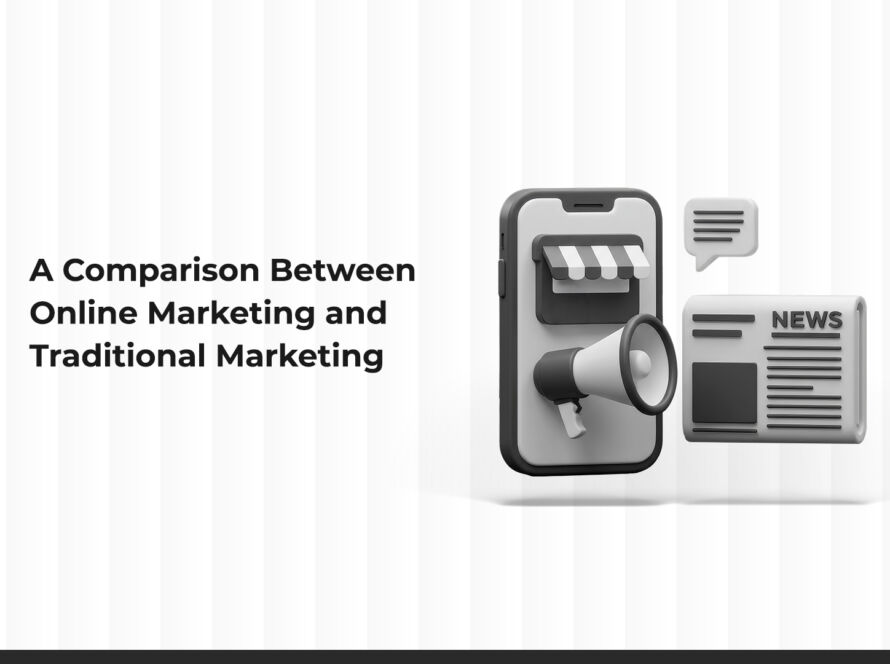In the ever-evolving world of digital marketing, email marketing remains one of the most effective tools for building customer relationships and enhancing engagement. This direct communication channel enables businesses to send personalized messages tailored to each customer’s needs.
In Saudi Arabia, email marketing has become an essential tool for many companies striving to enhance their communication with customers in an increasingly competitive environment. Email is a reliable means of reaching target audiences across the Kingdom, whether for announcing new products, offering special promotions, or sharing educational content that enhances the customer experience.
What is Email Marketing?
Email marketing is a digital marketing strategy that involves sending direct electronic messages to targeted customers to strengthen relationships and achieve various business objectives, such as increasing sales or improving customer loyalty. This method allows businesses to connect directly with their target audience in a personalized and fast manner, making it one of the most effective and efficient marketing techniques.
In Saudi Arabia, email marketing is gaining significant importance due to the widespread adoption of technology and the increasing reliance on digital communication by customers. As the Saudi market evolves, email has become a key channel for engaging with customers and building long-term relationships, contributing to business growth and success.
Benefits of Email Marketing
- Cost-Effective: Compared to traditional methods like TV or newspaper ads, email marketing is one of the most budget-friendly strategies.
- Easy Access to Target Audience: Emails can be personalized based on customer interests and behaviors.
- Accurate Performance Measurement: Helps analyze campaign results in real time, such as open and click-through rates, allowing for instant strategy adjustments.
- Customer Retention and Acquisition: Email is an excellent tool for maintaining engagement with existing customers while attracting new ones.
How to Implement Email Marketing?
Email marketing is a powerful tool that can be used to reach target audiences and strengthen customer relationships. With increasing competition in the Saudi market, businesses must follow well-planned strategies to maximize the benefits of this tool. Below is a step-by-step guide to professional email marketing that ensures positive results.
1. Build a Targeted Email List
The first essential step in email marketing is creating a database of potential or existing customers. This list should be targeted and well-organized to ensure that messages reach people genuinely interested in your offerings. Here are some ways to build this list:
- Website visitors: collect emails through subscription forms on your web pages. For example, offer free content like eBooks or reports in exchange for sign-ups.
- Social media registrations: invite followers on platforms like Facebook or Twitter to subscribe to your newsletter.
- Promotional offers: provide discounts or gift coupons in exchange for joining your email list.
2. Choose the Right Email Marketing Platform
Selecting the right platform to manage email marketing campaigns is crucial. Some of the best tools include:
- MailChimp: one of the most popular platforms, offering advanced features for creating emails and organizing campaigns.
- Constant Contact: provides analytics and measurement tools to track email marketing success.
- SendGrid: ideal for businesses needing customized email solutions.
3. Design Attractive Email Templates
Emails should be visually appealing yet professional. Here are some tips for improving email design:
- Catchy subject line: the subject should be engaging and clearly reflect the content. For example: “Exclusive 24-Hour Offer on Your Favorite Product.”
- Proper formatting: ensure easy readability and mobile compatibility by using suitable fonts and spacing.
- Visual appeal: high-quality images or illustrations enhance engagement.
- Clear call-to-action (CTA): include prominent CTAs like “Shop Now” or “Learn More.”
4. Write Engaging Email Content
Well-crafted content is essential for effective email marketing. Your email should be:
- Relevant: align with recipients’ interests using customer data for personalization.
- Persuasive: focus on the benefits of your product or service.
- Professional: avoid overly aggressive sales tactics; instead, provide informative content that builds trust.
5. Define Your Campaign Goal
Be clear about the objective of your email campaign. Are you:
- Promoting a new product?
- Announcing a discount?
- Encouraging customers to make a purchase?
Defining the goal helps tailor the email message and measure the campaign’s success.
6. Personalization and Dynamic Content
Personalizing emails enhances engagement. Here’s how:
- Use the recipient’s name in the subject line or body text for a personal touch.
- Customize offers based on customer behavior, such as discounts on previously viewed or purchased products.
7. Testing and Analytics
Before sending emails to your full list, conduct A/B testing to determine which version performs best. For example, test different subject lines or email designs.
Once sent, track campaign performance using key metrics:
- Open rate: percentage of recipients who opened the email.
- Click-through rate (CTR): number of users who clicked on links within the email.
- Conversion rate: number of recipients who completed the desired action (purchase, sign-up, etc.).
8. Optimal Email Timing
Timing plays a crucial role in email marketing success. Some optimal times include early morning or afternoon, based on customer behavior patterns.
Disadvantages of Email Marketing
Although email marketing is considered an effective and impactful tool for reaching customers and increasing sales, it comes with certain drawbacks that companies should consider when implementing their strategies. Below are some of the main disadvantages businesses may face when using email as a marketing tool:
1. High Rate of Unwanted Emails (Spam)
One of the biggest drawbacks of email marketing is the possibility of emails being classified as “spam.” This can lead to:
- Message cancellation: if emails are marked as spam by email services, they may not reach the intended recipients, reducing the effectiveness of the campaign.
- Damage to reputation: if spam incidents occur frequently, the company’s reputation may suffer, leading to a loss of customer trust.
Solution: to avoid this issue, it is crucial to obtain prior consent from customers to subscribe to emails and ensure that the content provided is valuable.
2. Low Open Rates
Despite its effectiveness, email marketing faces the challenge of low open rates, as many people ignore or do not open promotional emails. Reasons include:
- Unattractive content: if the subject line is not compelling or lacks appeal, customers may decide not to open the email.
- Overloading customers with emails: sending too many emails frequently can overwhelm customers, leading them to unsubscribe or ignore messages.
Solution: striking a balance in the number of emails sent and providing valuable content is key. Using attractive and relevant subject lines can also help increase open rates.
3. Personalization Challenges
Personalization is an effective strategy in email marketing, but it can sometimes be challenging due to:
- Insufficient data: if customer data is incomplete or inaccurate, it becomes difficult to personalize messages properly.
- Over-personalization: some customers may feel uncomfortable if messages are overly personalized or if companies track their behavior excessively.
Solution: personalization should be handled carefully. Using available data wisely and focusing on delivering valuable content can minimize this issue.
4. Unsubscribing from Emails
While email marketing relies on building a database of interested subscribers, a notable drawback is the possibility of customers unsubscribing. If they feel the emails lack value or receive too many promotional messages, they may opt out.
Solution: providing valuable content to customers is essential, along with offering an easy opt-out option if they no longer wish to receive emails. Adding a “Customize Email Preferences” option can be a good solution to reduce unsubscribe rates.
5. Technical Challenges in Design and Formatting
Technical challenges in design and formatting can impact the effectiveness of email marketing. Potential issues include:
- Device compatibility: designing emails that are compatible with various devices (smartphones, tablets, and computers) can be challenging.
- Incorrect formatting: errors in formatting may cause display issues on different email platforms or browsing modes.
Solution: it is best to use well-known design tools that support compatibility across all systems and devices. Additionally, testing emails on multiple platforms before sending them can help ensure proper display.
Email marketing platforms significantly enhance the effectiveness of marketing campaigns. By choosing the right platform for business needs, companies in Saudi Arabia or elsewhere can boost customer engagement and improve marketing strategies.
Email marketing is a powerful tool for enhancing customer engagement and achieving business goals. In Saudi Arabia, with the ongoing digital advancements, adopting effective strategies in this field is becoming increasingly important. Companies that invest in optimizing their use of this tool can strengthen their market position and build long-term customer relationships, ultimately contributing to sustainable growth and continuous success.



